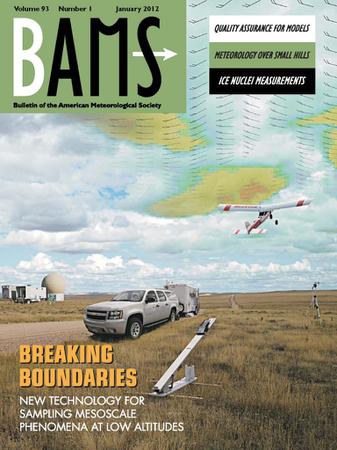WMO Typhoon Landfall Forecast Demonstration Project (2010–2022): A Decade of Transition from Track Forecasts to Impact Forecasts
IF 5.9
1区 地球科学
Q1 METEOROLOGY & ATMOSPHERIC SCIENCES
引用次数: 0
Abstract
Abstract The Typhoon Landfall Forecast Demonstration Project (TLFDP) (2010–2022) was an international cooperative scientific project conducted under the framework of the WMO. The primary objectives of the TLFDP were to enhance the capability of tropical cyclone (TC) forecasters, and support related decision-makers in effective utilization of the most advanced forecasting techniques for the ultimate purpose of reducing and preventing disasters associated with TC landfall. Forty agencies/organizations/projects globally participated in the activities of the TLFDP following its inception in 2010, although the primary focus was on landfalling TCs in the western North Pacific. The TLFDP facilitated collaborations and workshops that realized notable achievements in four key areas: 1) the collection, production, and sharing of TC data; 2) the development and application of TC forecast verification metrics; 3) research on TC forecast skill; and 4) development of new techniques for TC forecasting. An obvious outcome was the shift from prediction of TC features, including track and intensity, toward prediction of TC impacts with more probabilistic conception. The final years of the project also promoted increasing application of artificial intelligence and machine learning techniques in various techniques for analysis and forecasting of TCs. Although the TLFDP ended in 2022, its core activities have continued to be extended through new WMO projects and regional cooperative initiatives.世界气象组织台风登陆预报示范项目(2010-2022):从路径预报到影响预报的十年转变
摘要 台风登陆预报示范项目(TLFDP)(2010-2022 年)是在世界气象组织框架下开展的一个国际科学合作项目。该项目的主要目标是提高热带气旋预报员的能力,并支持相关决策者有效利用最先进的预报技术,以达到减少和预防与热带气旋登陆有关的灾害的最终目的。TLFDP 于 2010 年成立后,全球有 40 个机构/组织/项目参与了 TLFDP 的活动,但主要关注的是在北太平洋西部登陆的热带气旋。TLFDP 促进了合作和研讨会,在四个关键领域取得了显著成就:1) 热带气旋数据的收集、制作和共享;2) 热带气旋预报验证指标的开发和应用;3) 热带气旋预报技能的研究;4) 热带气旋预报新技术的开发。一个明显的成果是从预测包括路径和强度在内的热气旋特征转向预测更具概率概念的热气旋影响。项目的最后几年还促进了人工智能和机器学习技术在各种热气旋分析和预报技术中的应用。虽然 TLFDP 项目已于 2022 年结束,但其核心活动仍通过世界气象组织的新项目和区域合作倡议继续扩展。
本文章由计算机程序翻译,如有差异,请以英文原文为准。
求助全文
约1分钟内获得全文
求助全文
来源期刊
CiteScore
9.80
自引率
6.20%
发文量
231
审稿时长
6-12 weeks
期刊介绍:
The Bulletin of the American Meteorological Society (BAMS) is the flagship magazine of AMS and publishes articles of interest and significance for the weather, water, and climate community as well as news, editorials, and reviews for AMS members.

 求助内容:
求助内容: 应助结果提醒方式:
应助结果提醒方式:


